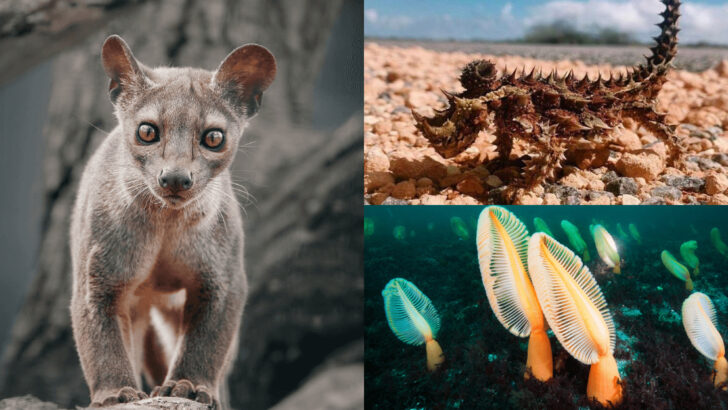The world we inhabit is home to an astonishing array of wildlife, some of which remain largely unknown to the majority of us. While many of us are familiar with the iconic predators like lions and sharks, there exists a myriad of lesser-known creatures that equally inspire awe and fear.
This blog post aims to unveil 29 such animals that you may never have known existed, each one more fascinating and chilling than the last. From remote rainforests to deep ocean abysses, these animals inhabit diverse terrains, showcasing nature’s incredible diversity and the mysteries it holds.
Giant Huntsman Spider
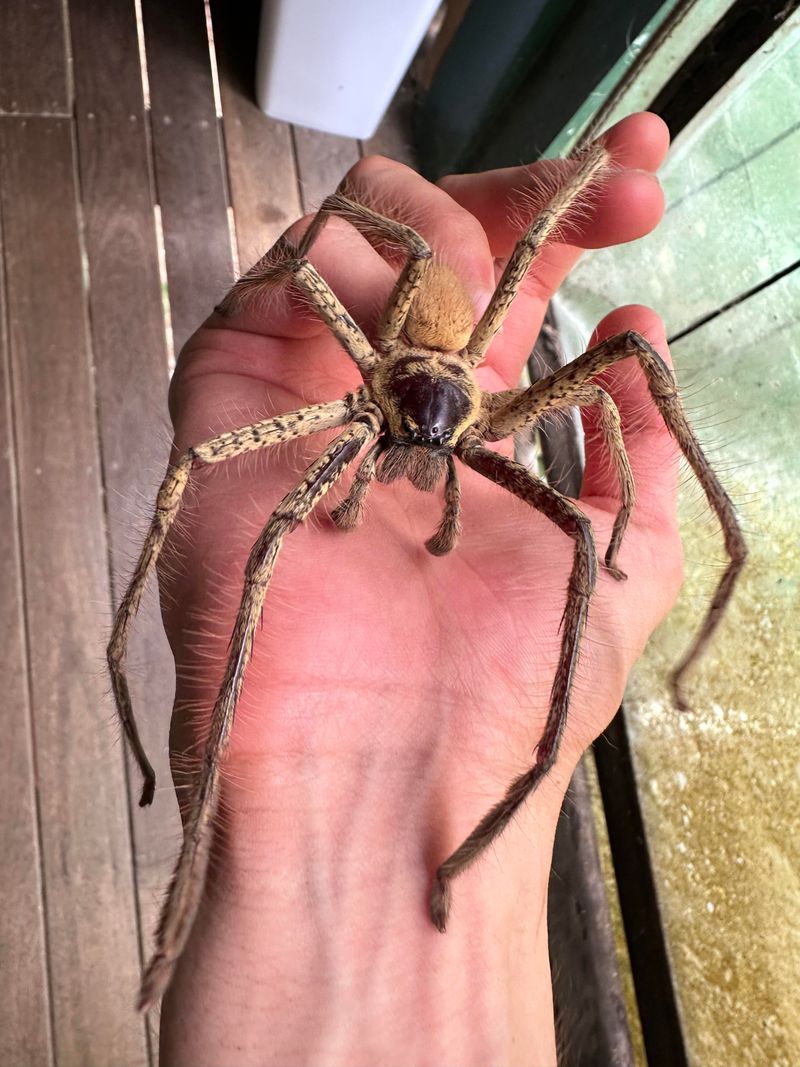
Lurking in the shadows of the Laotian jungle, the giant huntsman spider boasts a leg span that can reach up to 12 inches. This arachnid doesn’t spin webs; instead, it relies on agility and speed to ambush prey.
Its presence in the wild has been known to startle even the most seasoned explorers. While not deadly to humans, its appearance is enough to make anyone’s skin crawl.
Experienced researchers often tread carefully, aware of the spider’s camouflaging abilities. Despite its fearsome reputation, it plays a crucial role in controlling insect populations.
Goblin Shark
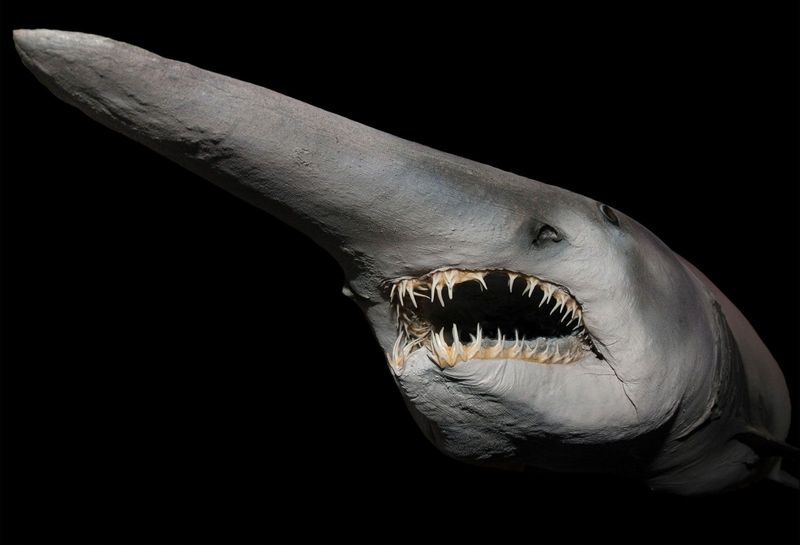
Dwelling in the inky depths of our oceans, the goblin shark is a true living fossil. It’s distinguished by its elongated snout and protrusible jaws filled with nail-like teeth.
Rarely seen by humans, this deep-sea predator remains one of the ocean’s greatest mysteries. Its eerie appearance and sudden lunging attack make it a formidable hunter in its murky habitat.
Researchers continue to study its movements, understanding that it is crucial to the balance of marine ecosystems. Despite its fearsome look, encounters with this shark are incredibly rare.
Aye-Aye
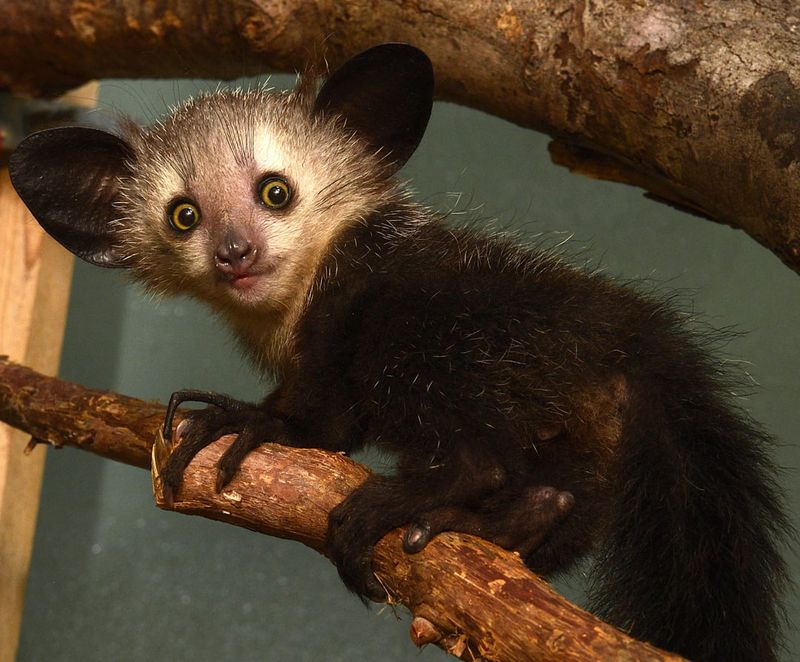
Native to Madagascar, the aye-aye is an unusual primate with a reputation steeped in superstition. Its large eyes help it see in the darkness of night, while its long, bony finger taps and listens for hollow spaces in wood where grubs hide.
Often misunderstood, this creature is vital in controlling insect populations. Many locals regard it as an omen of ill luck, leading to its persecution.
Conservation efforts aim to change perceptions and protect its dwindling population. Incredibly unique, the aye-aye symbolizes the rich biodiversity of Madagascar.
Tarantula Hawk Wasp
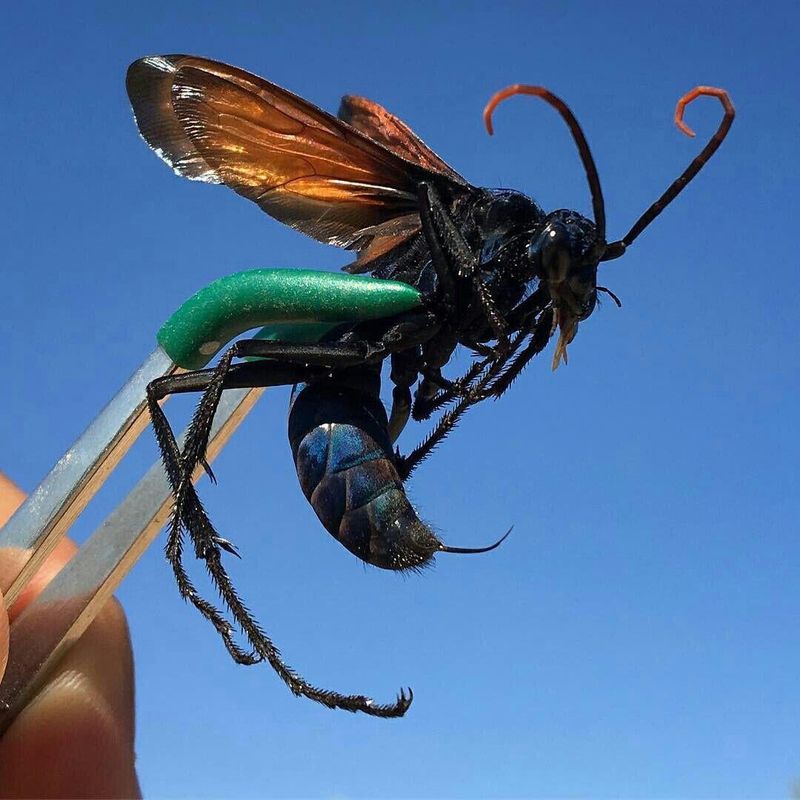
This formidable predator of the insect world, the tarantula hawk wasp, is known for its striking appearance and painful sting. Found in desert landscapes, it hunts tarantulas, paralyzing them with its venom to lay eggs inside.
Though its sting is excruciating, it poses little threat to humans unless provoked. Its brilliant orange wings and metallic blue body make it unmistakable as it flits through arid environments.
For those living in its territory, understanding its behavior ensures coexistence without incident. The tarantula hawk is a testament to nature’s brutal elegance.
Vampire Squid
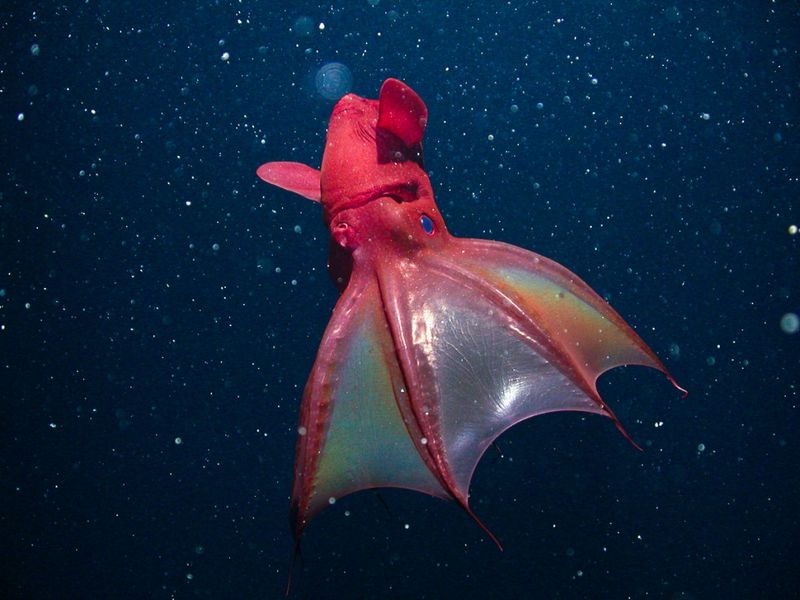
The vampire squid is a master of disguise, residing in the oxygen-minimal zones of the deep ocean. With its cloak-like webbing and glowing photophores, it drifts eerily through the dark.
Unlike its name suggests, it feeds on detritus rather than blood, using filaments to capture organic debris. Its unique adaptations allow it to survive where few others can.
Scientists are fascinated by its ability to endure extreme conditions, offering insights into the resilience of life. Despite its spooky moniker, the vampire squid is more curious than menacing.
Shoebill
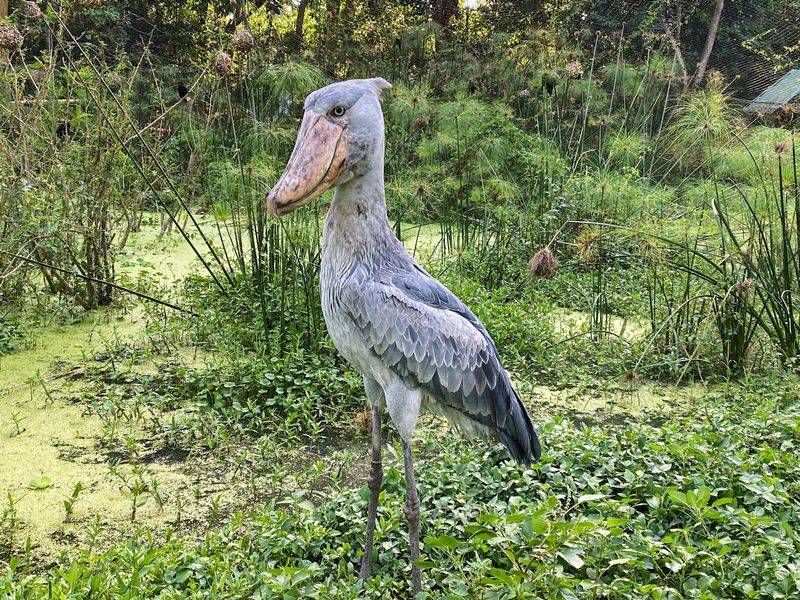
The shoebill stork, with its impressive shoe-shaped bill and towering stature, is a sight to behold in the wetlands of Central Africa. Its dinosaur-like appearance makes it a captivating subject for bird enthusiasts.
This solitary hunter patiently waits in the water, striking with precision at fish and frogs. Conservationists monitor its habitats, as human encroachment threatens its existence.
While its stern gaze might intimidate, the shoebill is a gentle giant, embodying the serene beauty of its marshy domain. Protecting this species ensures that such ancient wonders persist.
Thorny Dragon
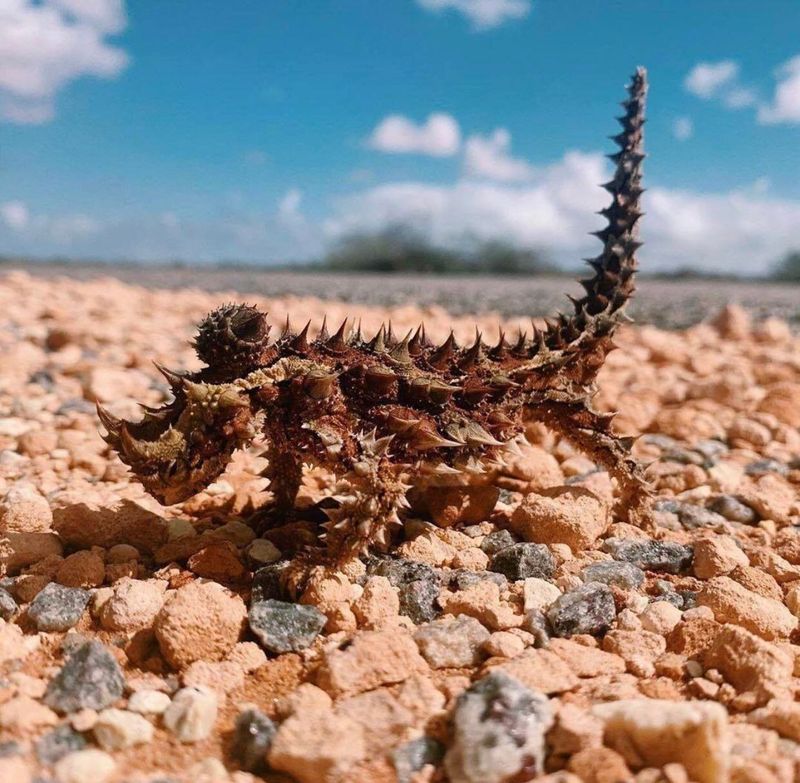
The thorny dragon, native to Australia, is a master of adaptation in the harsh desert environment. Covered in menacing spikes, it deters predators while also collecting moisture from the sparse air.
Its unique walk, known as the “thorny dance,” helps it remain inconspicuous among the sand dunes. Though its appearance is daunting, this lizard is harmless to humans, feeding exclusively on ants.
Nature enthusiasts are often delighted by its intricate patterns and survival tactics. In the vast arid lands, the thorny dragon represents the ingenious resilience of life.
Sea Pen
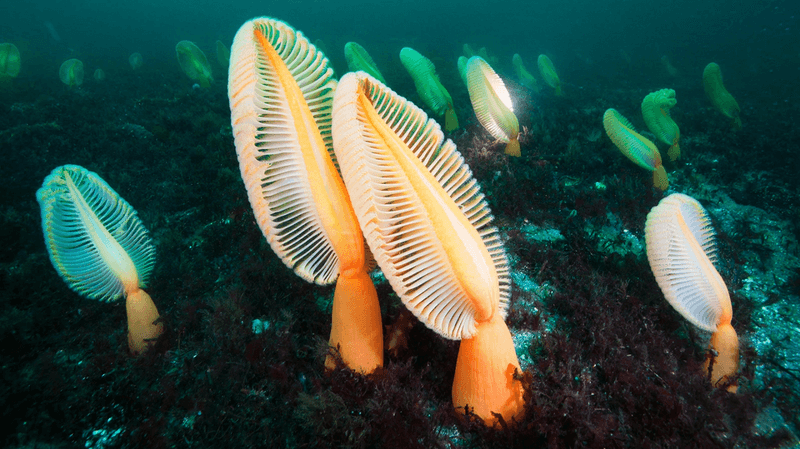
Resembling an antique quill, the sea pen is a fascinating marine organism found on the ocean floor. This colonial creature consists of polyps working together for survival, often illuminating the sea bed with their gentle glow.
Though appearing plant-like, sea pens are entirely animal, feeding on plankton swept by ocean currents. Marine biologists study their ecological role in maintaining healthy seabeds.
While they might seem otherworldly, these creatures are integral to ocean biodiversity. Their delicate beauty and function underscore the complexity of marine life.
Star-Nosed Mole
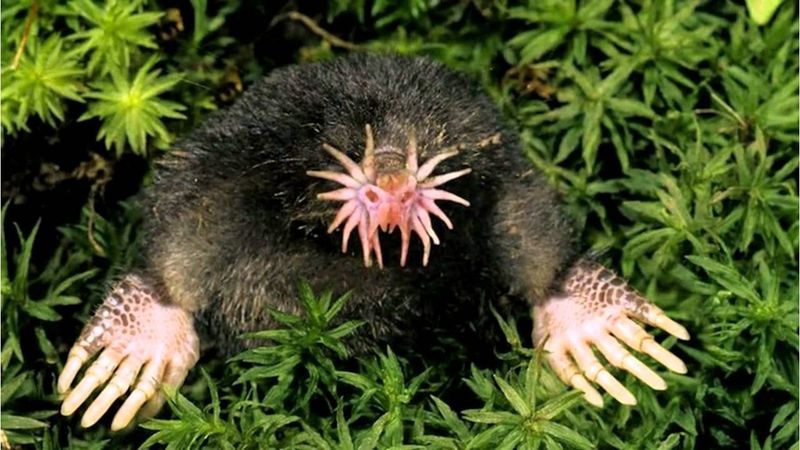
The star-nosed mole, equipped with a bizarre star-shaped nose, is a remarkable example of evolution. Found in North American wetlands, this tiny mammal uses its sensitive nasal appendages to detect prey underwater.
Its exceptional speed in identifying and capturing food makes it a unique predator in its domain. Despite its odd appearance, the mole’s activities aerate the soil, benefiting its ecosystem.
Scientists continue to marvel at its adaptations, which challenge our understanding of sensory perception. The star-nosed mole is a testament to nature’s ingenuity and adaptability.
Gharial
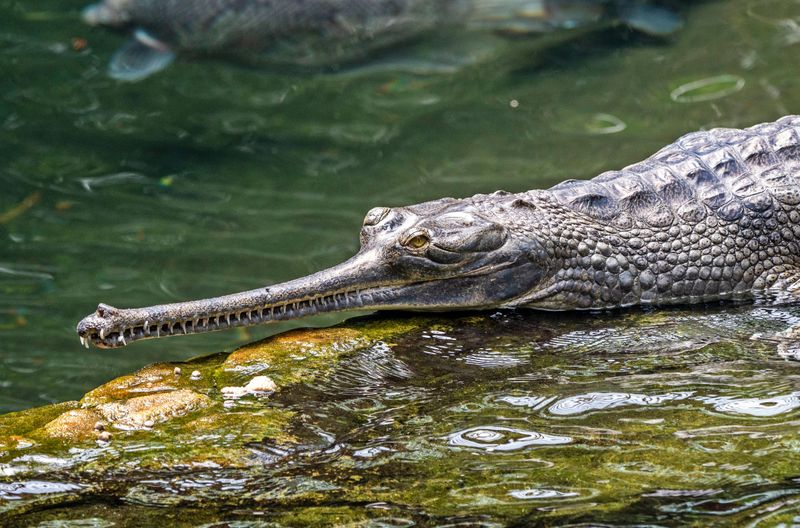
With a jaw like no other, the critically endangered gharial is a specialized fish-eating crocodile. Its long, thin snout is perfect for snapping up fish in the rivers of Northern India.
This reptile can often be seen sunning itself on riverbanks, its presence indicative of a healthy aquatic environment. Conservation efforts focus on its dwindling numbers, as habitat loss poses a significant threat.
Understanding the gharial’s role underscores the importance of preserving river ecosystems. Often overlooked, this unique crocodile leaves a lasting impression on those fortunate enough to observe it.
Tasmanian Devil
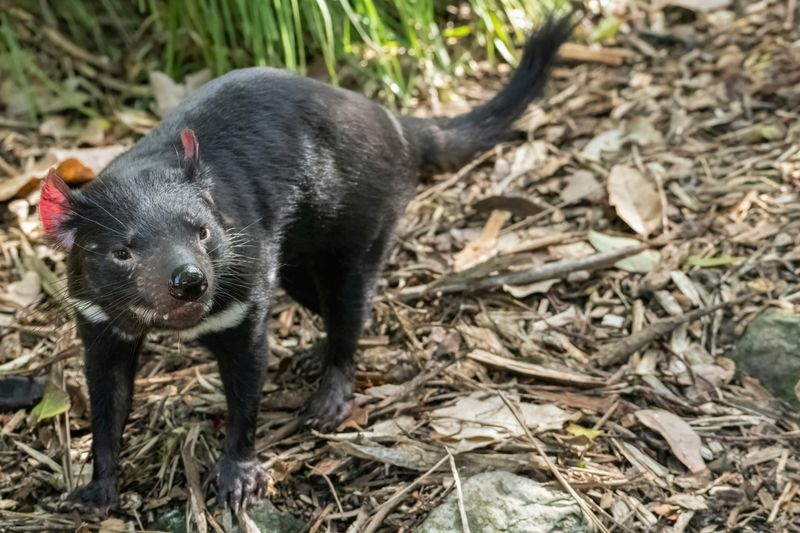
Once thought to be a myth, the Tasmanian devil is very real and full of personality. These carnivorous marsupials are known for their ferocious temper and distinctive growl.
They serve as scavengers, playing a crucial role in keeping their environment clean by consuming carrion. However, their population faces challenges from disease and habitat destruction.
Conservationists are working tirelessly to ensure their survival through breeding programs and disease research. Observing a Tasmanian devil in its natural habitat is a reminder of the wild heart of Australia.
Okapi
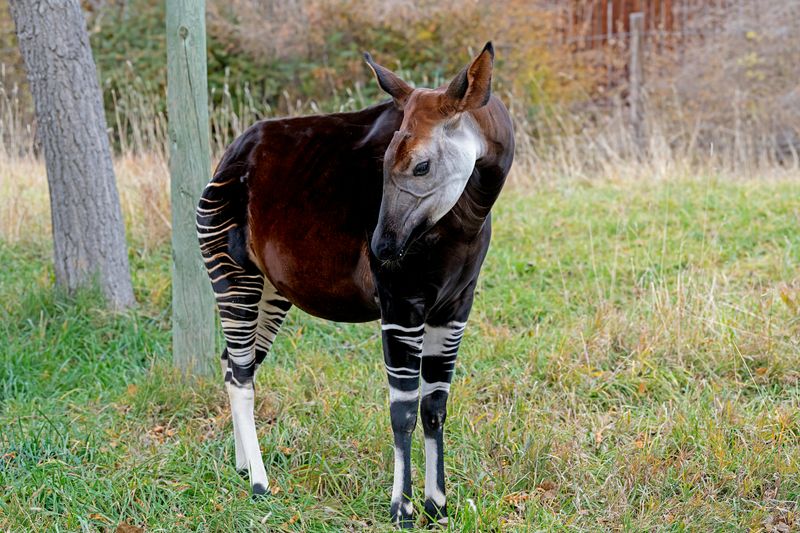
Hidden within the dense Ituri Forest of Central Africa, the okapi is a rare and elusive relative of the giraffe. Its striking zebra-like stripes on its legs serve as camouflage amidst the dappled sunlight.
This herbivorous mammal feeds on a variety of leaves and fruits, often remaining solitary. Efforts to protect its habitat are paramount, as deforestation poses a continuous threat.
To glimpse an okapi is to experience a piece of evolutionary wonder, bridging the gap between giraffes and their forest environment. It’s a symbol of the mysteries that forests hold.
Irrawaddy Dolphin
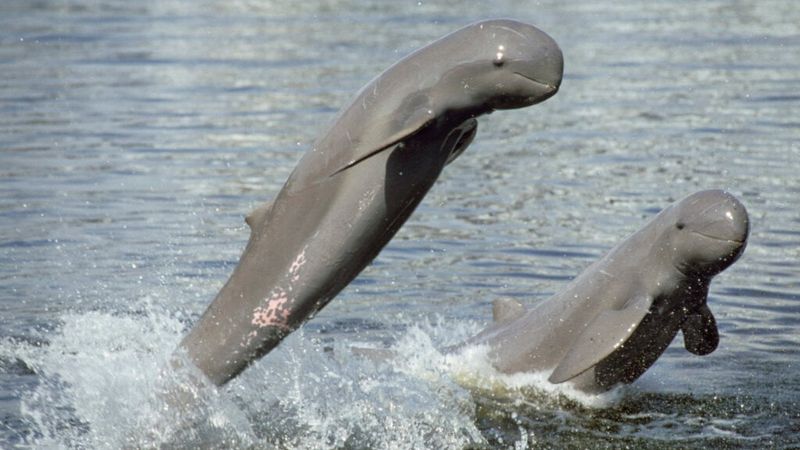
The Irrawaddy dolphin, with its distinctive rounded forehead and expressive face, is a cherished resident of Southeast Asia’s waterways. Unlike many dolphins, it prefers freshwater environments such as rivers and estuaries.
Its playful nature and unique appearance make it a favorite among locals and tourists alike. However, it faces threats from fishing nets and habitat degradation.
Conservationists emphasize the importance of protecting these waters to ensure the dolphin’s survival. Spotting an Irrawaddy dolphin is a delightful experience, offering a glimpse into the rich aquatic life of the region.
Saiga Antelope
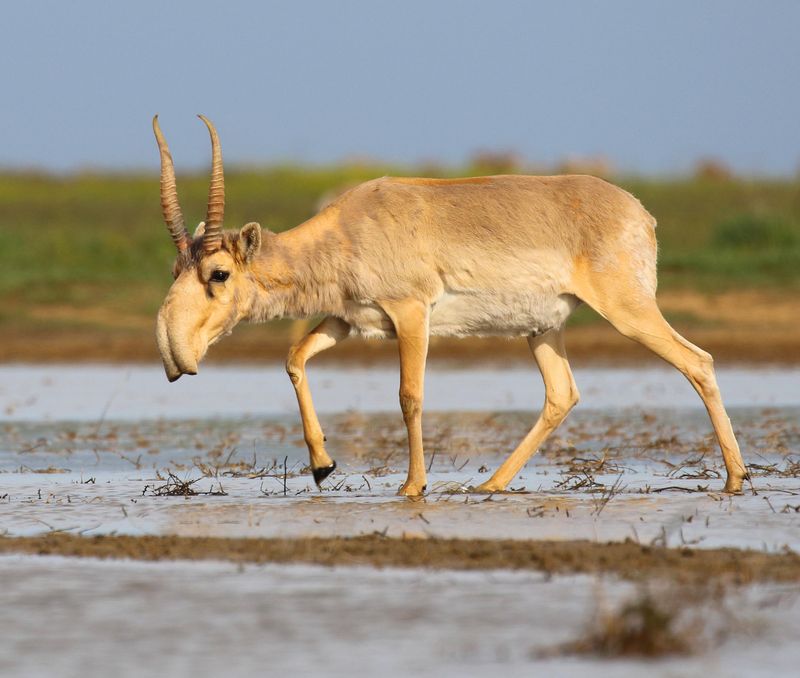
The saiga antelope, with its distinctive oversized nose, roams the vast steppes of Central Asia. This peculiar adaptation helps to filter dust and regulate body temperature.
Sadly, the saiga is critically endangered, suffering from poaching and habitat loss. Conservation initiatives strive to stabilize its population, highlighting the urgent need for protection.
Observing a herd of saiga is witnessing a vanishing piece of the wild, where their unique form once dominated the landscape. Their survival is a reminder of the delicate balance in nature that requires vigilant care.
Pink Fairy Armadillo
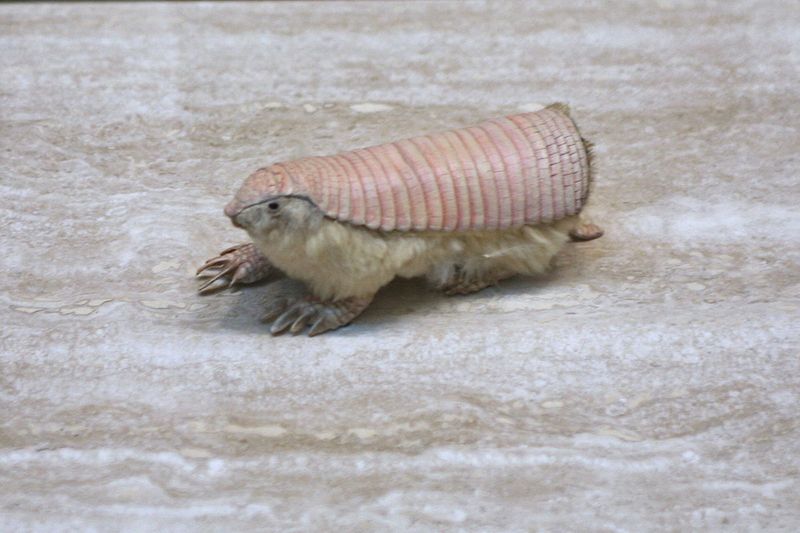
The pink fairy armadillo, the smallest of its kind, is a whimsical creature native to the deserts of Argentina. Its delicate pink shell resembles rose petals, providing both protection and camouflage.
This nocturnal animal is a skilled digger, using its claws to burrow in search of ants and insects. Due to its elusive nature, sightings are rare, making it a coveted subject of study for researchers.
Efforts to understand its habitat needs are crucial as environmental changes threaten its survival. The pink fairy armadillo inspires wonder with its unique charm.
Goliath Tigerfish
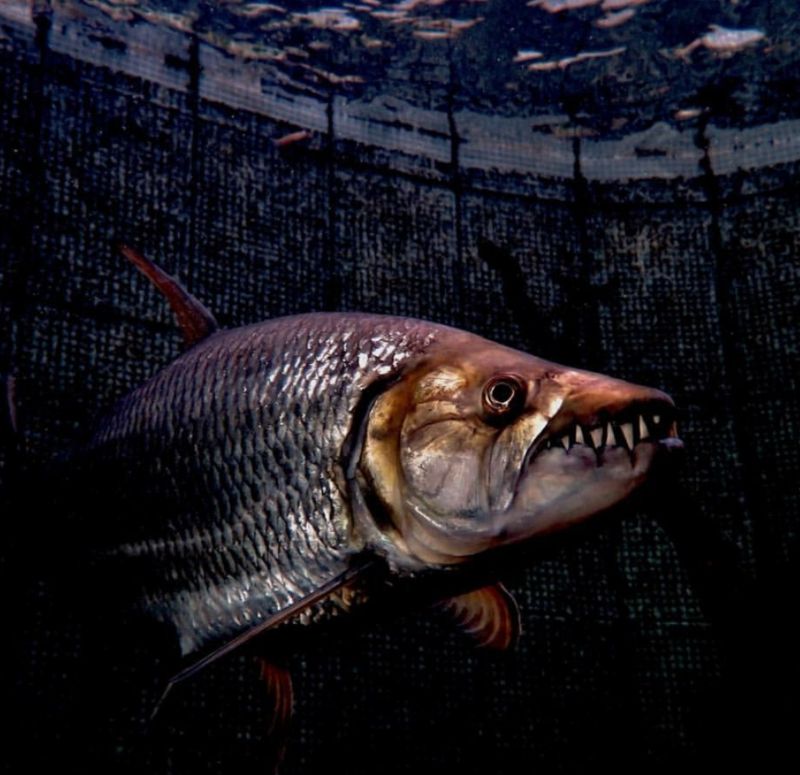
Lurking in the depths of the Congo River, the goliath tigerfish is a formidable freshwater predator. Known for its immense size and sharp teeth, this fish strikes fear into other aquatic creatures.
Its predatory prowess makes it a challenging catch for anglers seeking adventure. Conservationists keep a watchful eye on its habitat, as overfishing and environmental changes pose risks.
The goliath tigerfish symbolizes the raw power of nature, fascinating those who dare to seek it out. Its presence underscores the need to protect diverse river ecosystems.
Olm
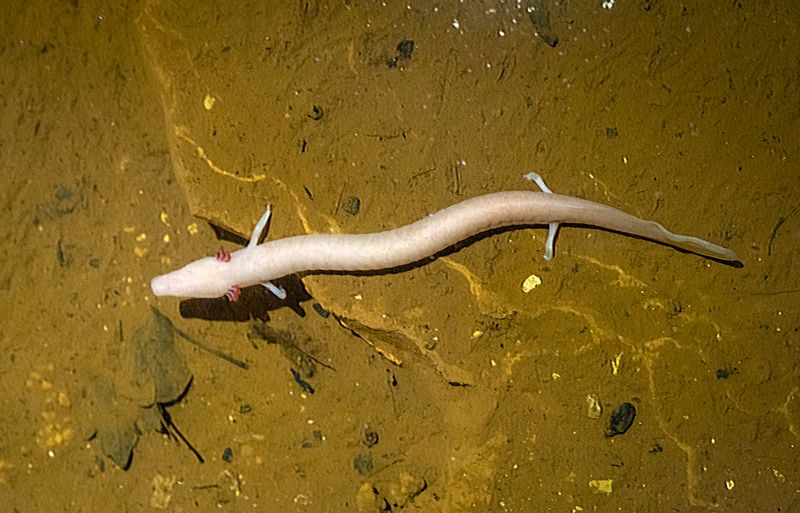
Dwelling in the subterranean waters of European caves, the olm is an extraordinary amphibian. This blind creature has adapted to life in total darkness, with its pale, translucent skin and highly developed sense of smell.
Its long lifespan and ability to survive without food for years add to its mystique. Scientists study the olm for insights into evolutionary biology and adaptation.
As fragile ecosystems face threats, preserving these cave habitats becomes increasingly important. The olm is a gentle reminder of the hidden wonders beneath our feet, resilient and enigmatic.
Proboscis Monkey
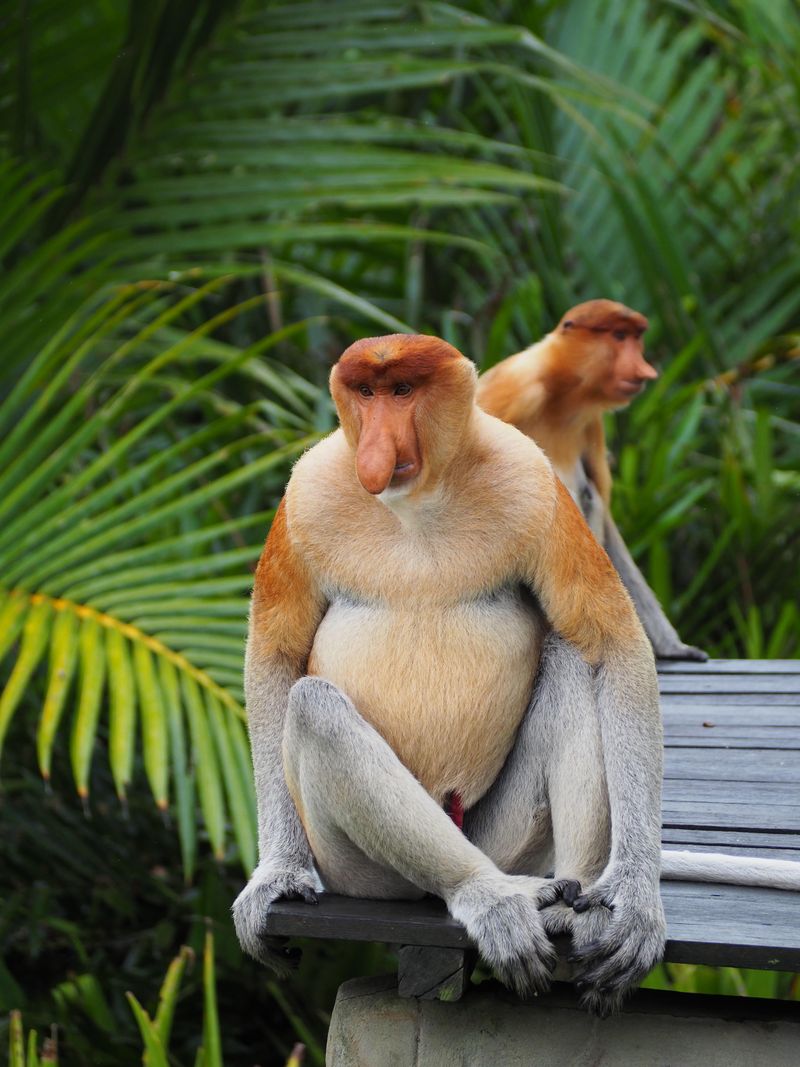
With its comically large nose, the proboscis monkey is a distinctive primate found in Borneo’s mangroves. This arboreal animal uses its webbed feet to swim across rivers, navigating its lush habitat.
Its nasal appendage plays a role in attracting mates and amplifying vocalizations. Sadly, deforestation threatens its existence, spurring conservation efforts.
Observing the proboscis monkey offers a glimpse into the unique adaptations that evolution can produce. It’s a testament to the diversity of life in tropical forests and the need to protect such biodiverse regions.
Naked Mole-Rat
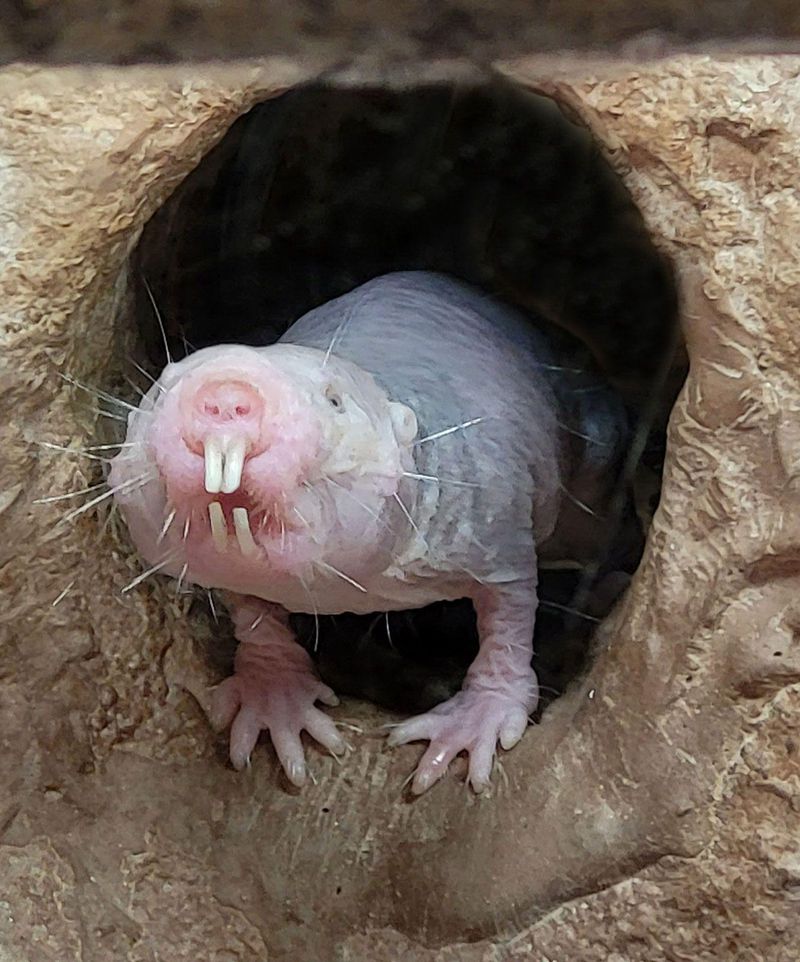
The naked mole-rat, with its hairless, wrinkled appearance, is a study in evolutionary success. Living in eusocial colonies underground in East Africa, it exhibits traits more akin to insects than mammals.
This rodent’s resistance to cancer and ability to survive with low oxygen levels intrigue scientists. Its social structure ensures survival in harsh conditions, with cooperative care for the queen and young.
As researchers uncover its secrets, the naked mole-rat challenges our understanding of mammalian life. It’s an example of nature’s unexpected solutions to environmental challenges.
Japanese Spider Crab
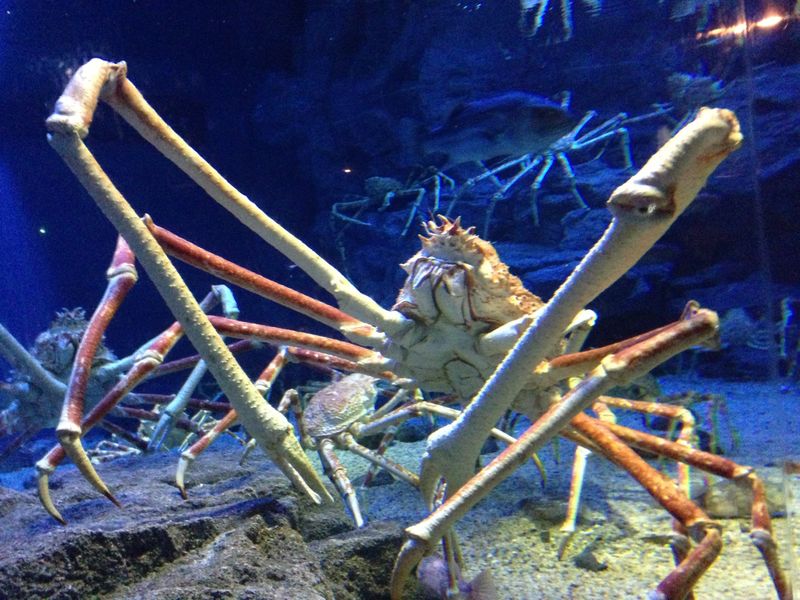
With the largest leg span of any arthropod, the Japanese spider crab is a giant of the sea. Found in the waters around Japan, it dwells at depths where few dare to venture.
Despite its intimidating appearance, it is a gentle scavenger, helping to clean the ocean floor. Its long, spindly legs allow it to traverse rocky seabeds with ease.
Conservationists study its habitat, as overfishing and climate change threaten its existence. The spider crab is a reminder of the ocean’s vast mysteries and the delicate balance of marine ecosystems.
Fossa
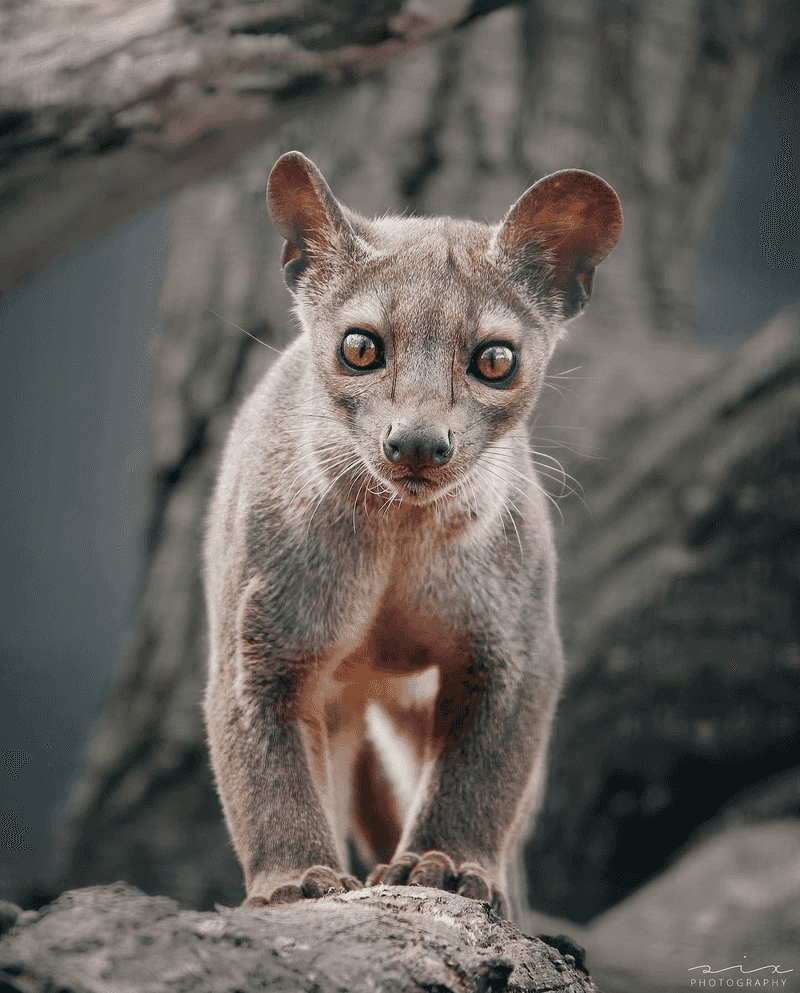
The fossa, Madagascar’s top predator, resembles a cross between a cat and a mongoose. Its agile body and sharp senses make it a formidable hunter in the island’s forests.
Preying on lemurs and other small animals, it plays a crucial role in maintaining ecological balance. The fossa’s elusive nature adds to its mystique, as sightings are rare.
Conservationists emphasize the importance of preserving Madagascar’s unique habitats to ensure the fossa’s survival. This enigmatic predator serves as a symbol of the island’s unparalleled biodiversity and the challenges it faces.
Cassowary
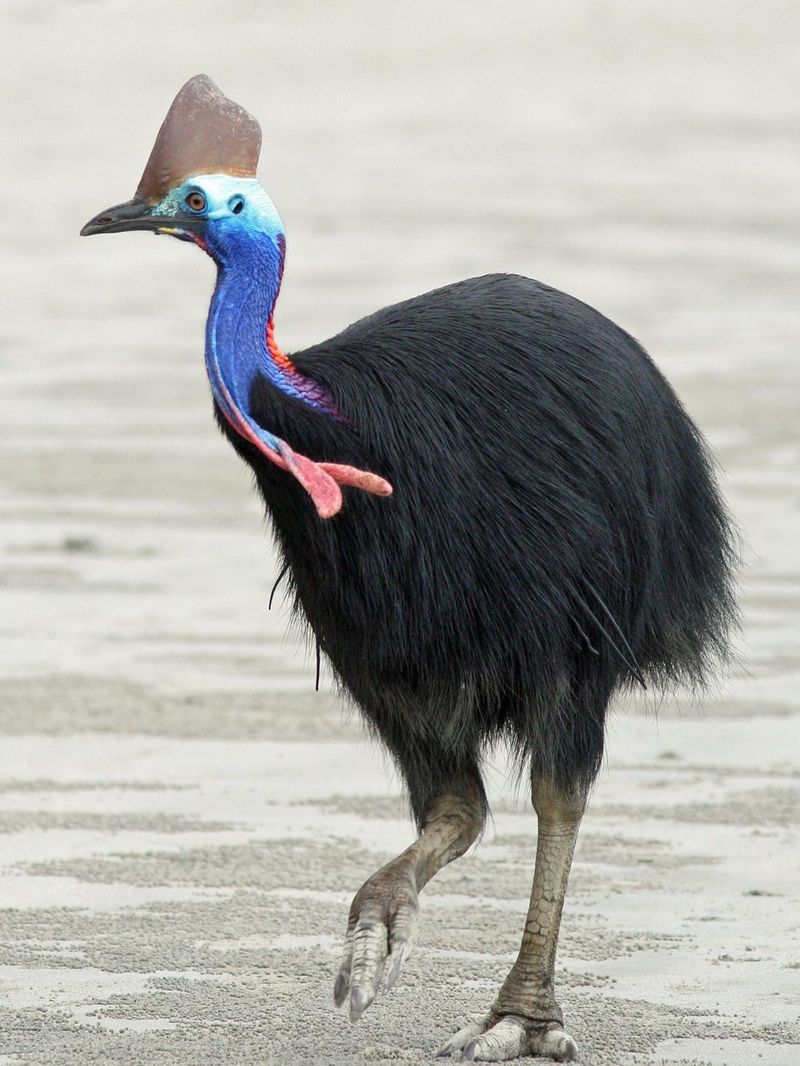
The cassowary, native to the rainforests of Australia and New Guinea, is a striking bird known for its vivid colors and helmet-like casque. Despite its beauty, it is considered one of the world’s most dangerous birds due to its powerful legs and sharp claws.
This flightless bird is vital for seed dispersal, ensuring the health of its forest home. Encounters with humans are rare but can be dangerous if provoked.
Conservation efforts focus on protecting its habitat from deforestation. The cassowary embodies the vibrant and fragile nature of rainforest ecosystems.
Komodo Dragon
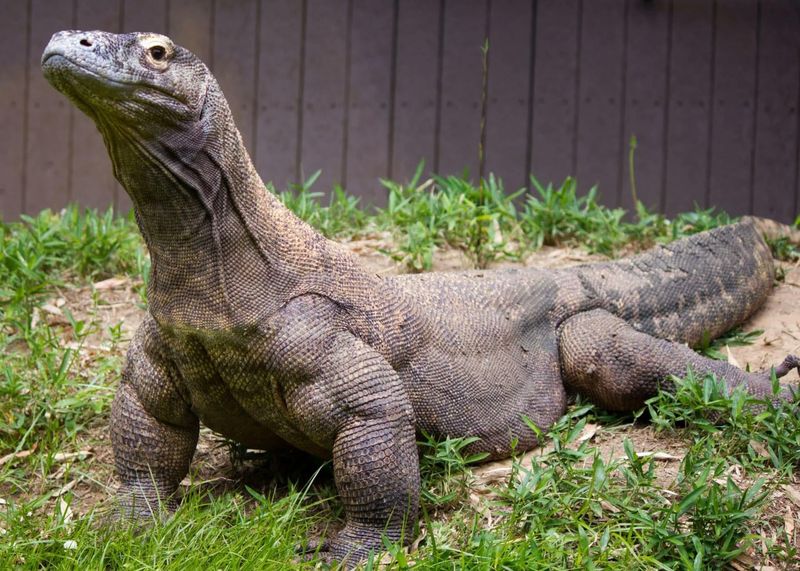
The Komodo dragon, the largest living lizard, is a formidable predator found on Indonesia’s Komodo Island. With its muscular build and toxic bite, it commands respect in the animal kingdom.
This apex predator can take down prey as large as a water buffalo. Conservationists work to protect its natural habitat from threats like tourism and habitat destruction.
Observing a Komodo dragon in the wild is a breathtaking experience, revealing the raw power of nature. Its existence underscores the importance of preserving unique ecosystems for future generations.
Matamata Turtle
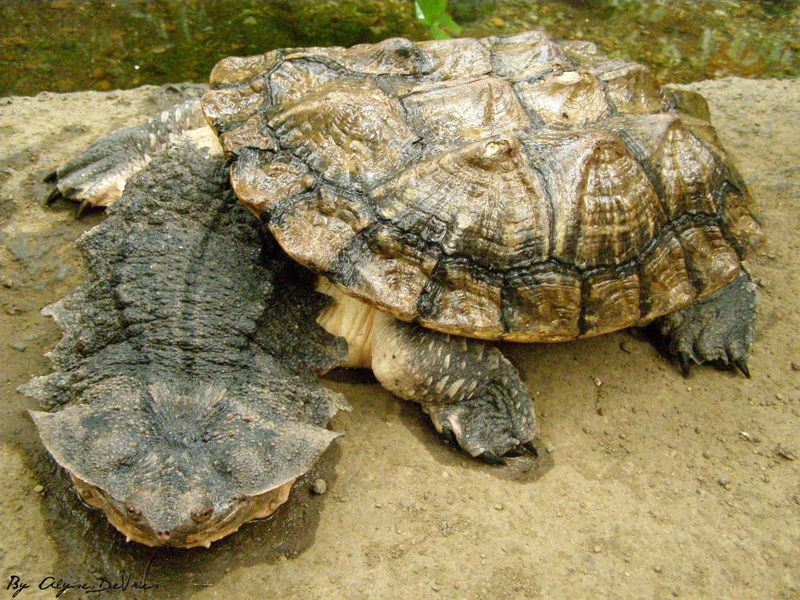
The matamata turtle is a master of disguise, with a shell that mimics fallen leaves in the Amazonian rivers. Its peculiar appearance serves as both camouflage and a hunting tool, allowing it to ambush unsuspecting fish.
This aquatic reptile’s unique features make it a fascinating subject for herpetologists. As deforestation and pollution threaten its habitat, conservationists stress the importance of protecting the Amazon’s rich biodiversity.
The matamata turtle is a testament to nature’s creativity in evolution, blending seamlessly with its environment to survive.
Maned Wolf
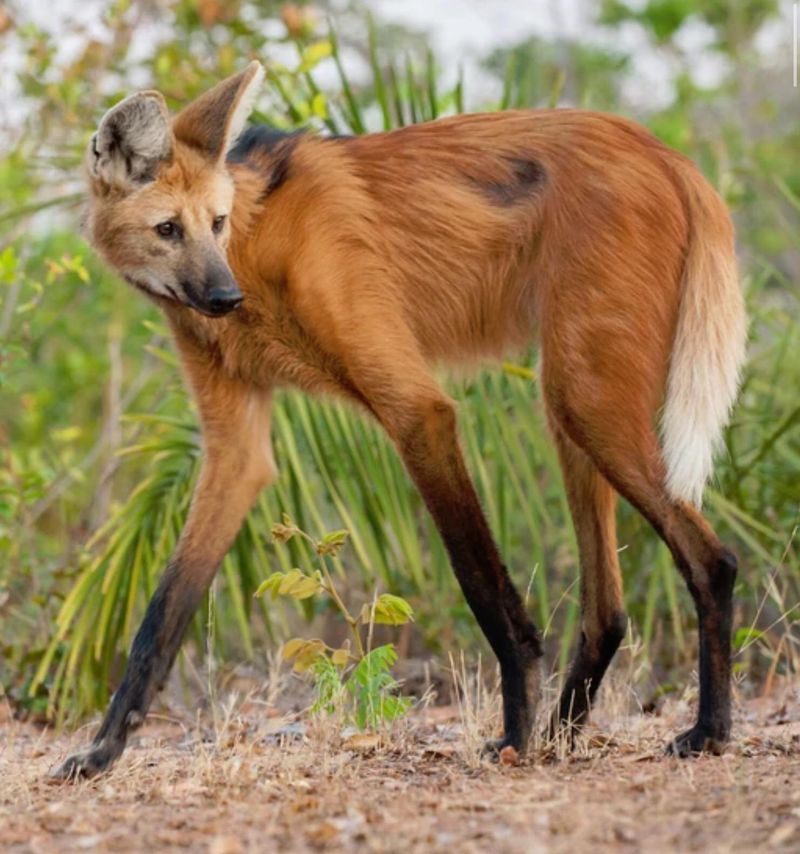
The maned wolf, with its striking appearance and long legs, is an iconic inhabitant of South America’s savannas. Its fox-like body and solitary nature set it apart from other canids.
This omnivorous creature’s diet consists of fruits, small animals, and plants, playing a vital role in seed dispersal. Habitat loss and road collisions pose significant threats, prompting conservation efforts.
Observing the maned wolf in the wild offers insight into the unique adaptations of its species. It stands as a symbol of the wild heart of Brazil’s savannas.
Chambered Nautilus
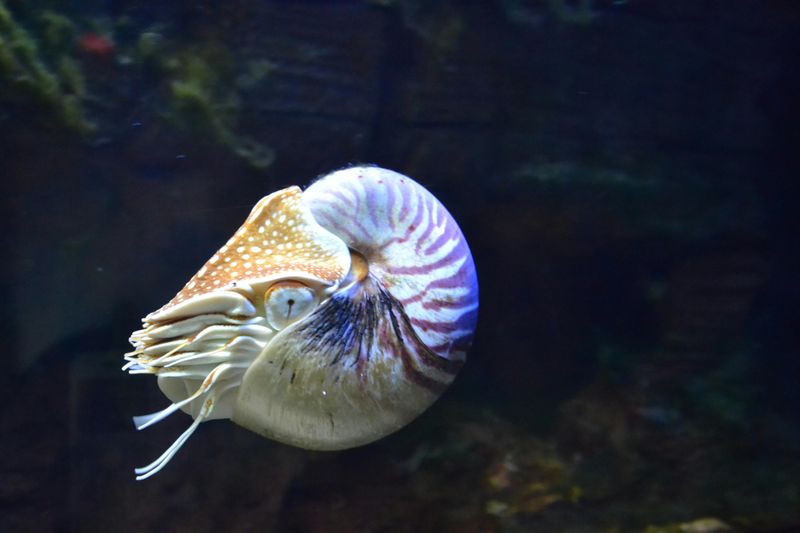
The chambered nautilus, a marine mollusk with a beautifully spiraled shell, navigates the Indo-Pacific’s warm waters. This ancient creature, unchanged for millions of years, is a living fossil.
Its buoyancy is controlled by gas-filled chambers within its shell, allowing it to move gracefully. Although its shell is sought after for decoration, overharvesting threatens its population.
Marine conservationists emphasize sustainable practices to protect this oceanic icon. Observing a chambered nautilus reveals a glimpse into the deep past, where ancient lifeforms still persist in today’s oceans.
Axolotl
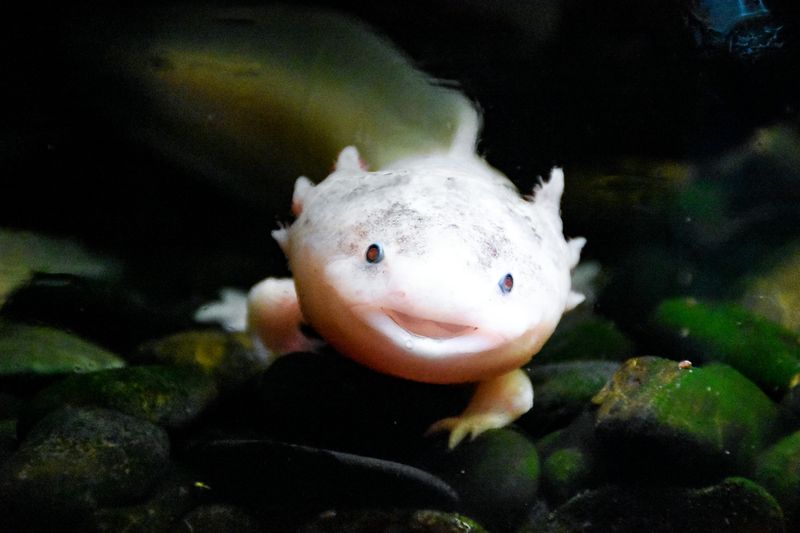
The axolotl, an aquatic salamander native to Mexico, is renowned for its remarkable regenerative abilities. Unlike other amphibians, it retains its larval features throughout its life, making it a subject of fascination for scientists.
Its feathery gills and perpetually smiling face add to its charm. Conservationists strive to protect its natural habitat, as urbanization and pollution threaten its existence.
The axolotl is a symbol of resilience and adaptability in the natural world, inspiring ongoing research into regeneration. Discovering an axolotl in the wild is a rare and enchanting experience.
Sun Bear
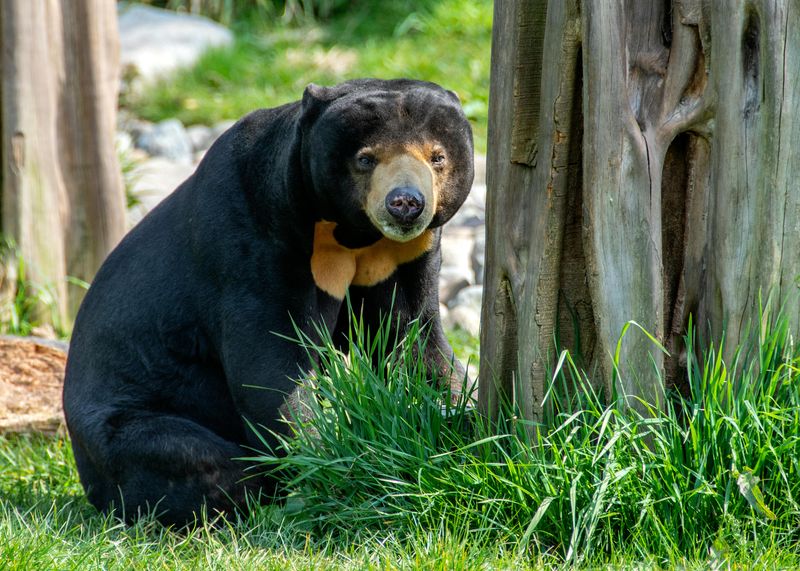
The sun bear, the smallest of its kind, is an expert climber found in the rainforests of Southeast Asia. Its distinctive orange chest patch resembles a rising sun, giving this elusive bear its name.
Despite its small size, it’s equipped with powerful claws and a long tongue for extracting insects and honey. Deforestation and illegal hunting present significant threats, prompting urgent conservation actions.
Observing a sun bear in its natural habitat highlights the richness of forest ecosystems. It serves as a reminder of the delicate balance required to preserve wildlife diversity.
Giant Isopod
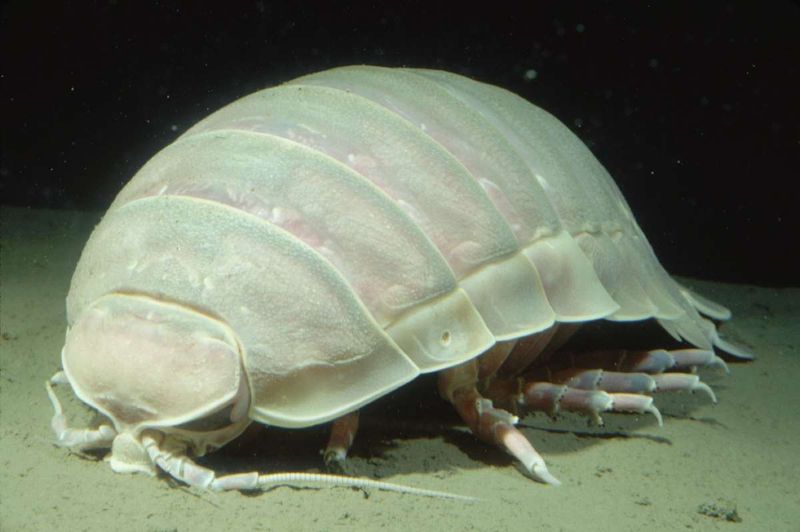
Giant Isopod
Hidden in the depths of the ocean, giant isopods are like the armored tanks of the sea. These crustaceans can grow up to 14 inches long, their segmented bodies and numerous legs making them look like something out of a sci-fi movie.
They are scavengers, often found on the ocean floor, feasting on the remains of other sea creatures.
Despite their daunting appearance, they are not aggressive to humans. Their large size is an adaptation to the extreme pressure and cold temperatures of the deep sea.
Encountering one in its natural habitat is a rare experience, as they dwell at depths of 500 meters or more.

